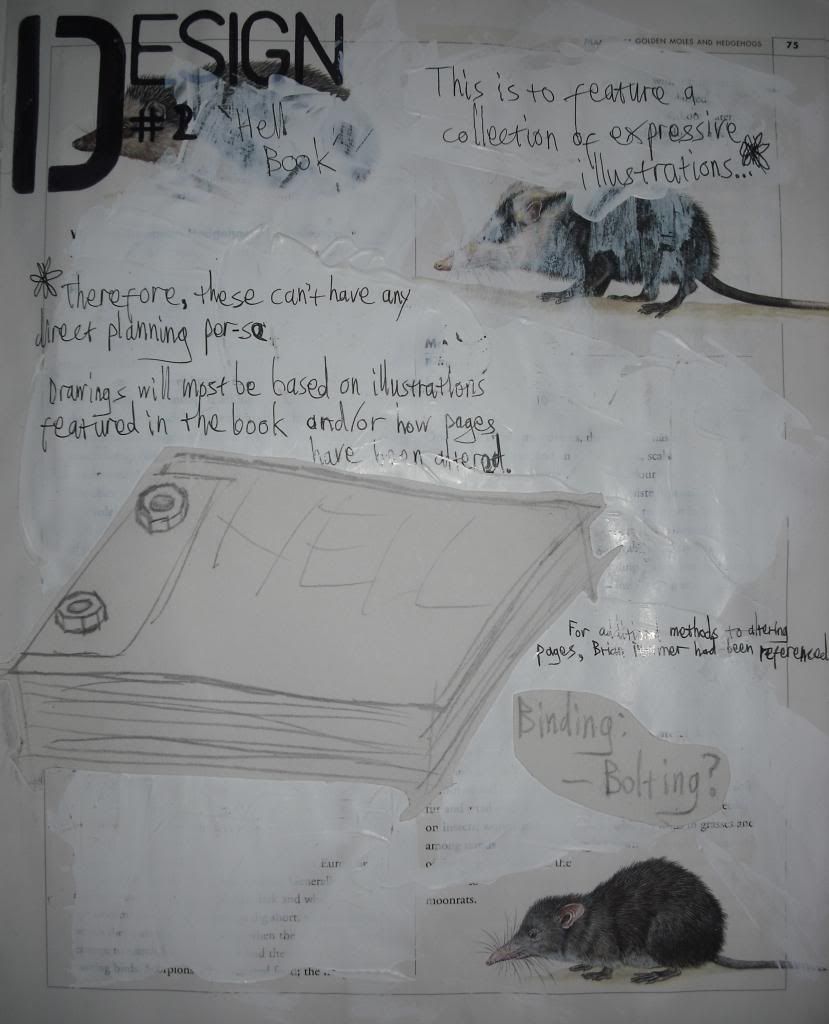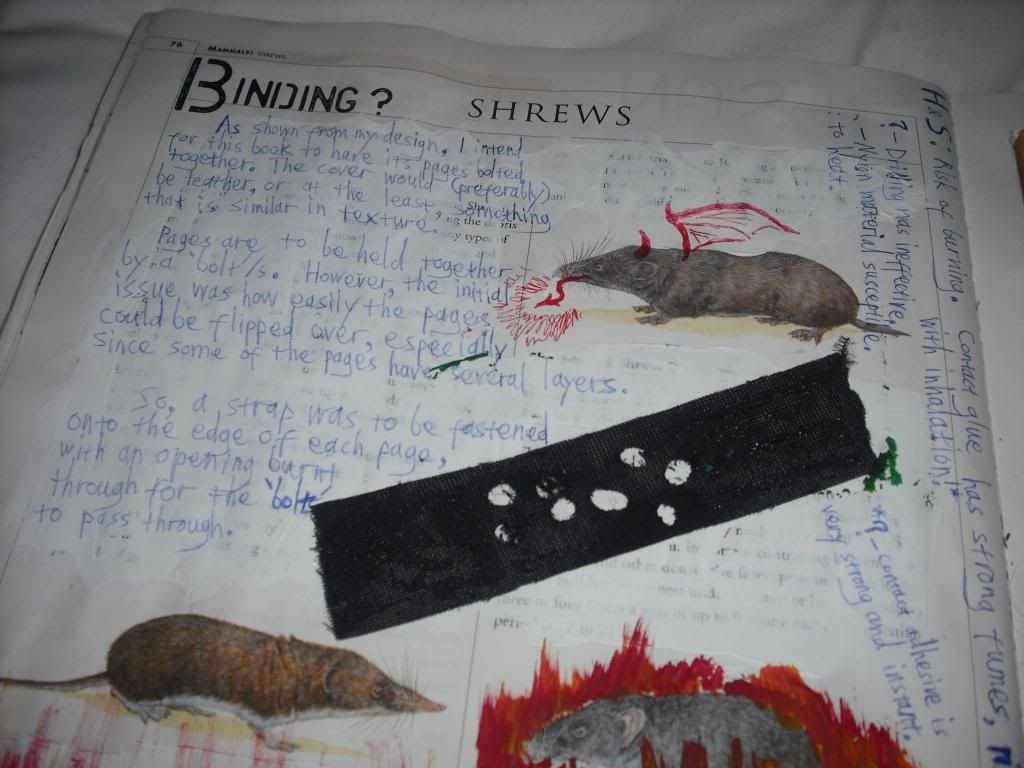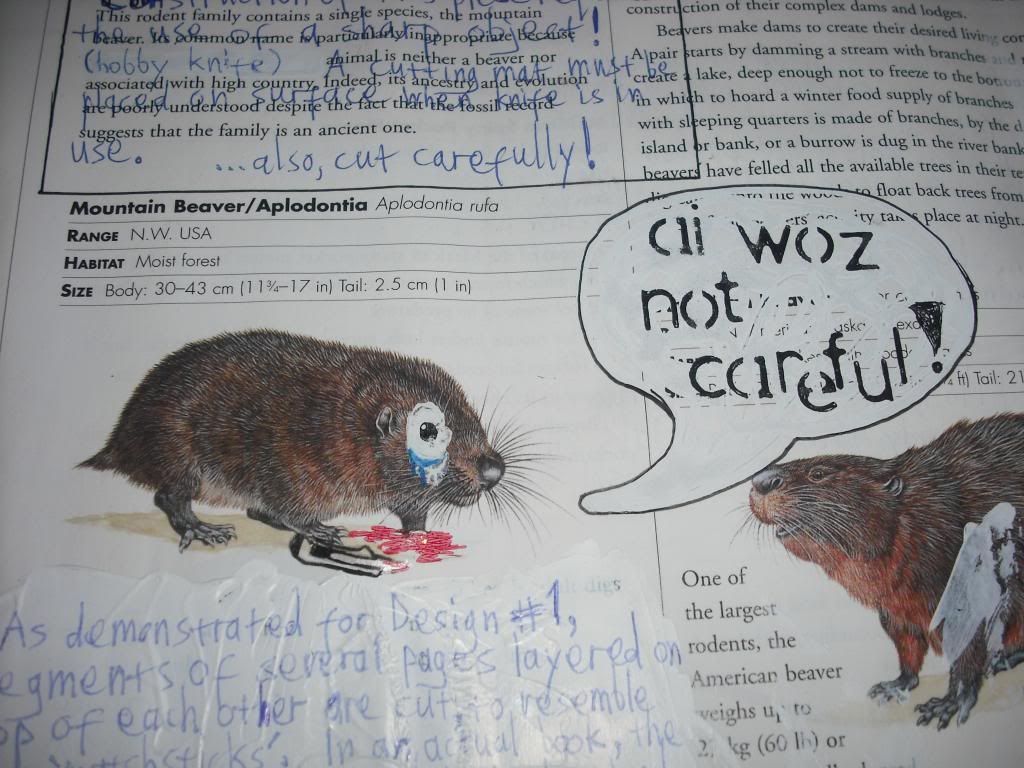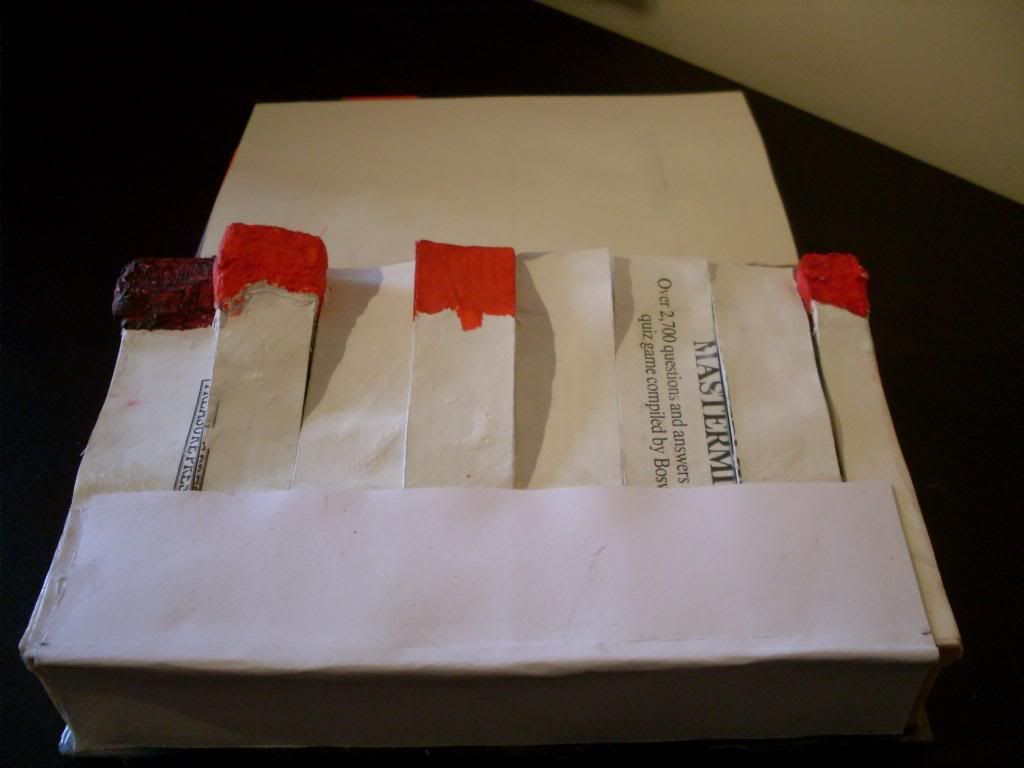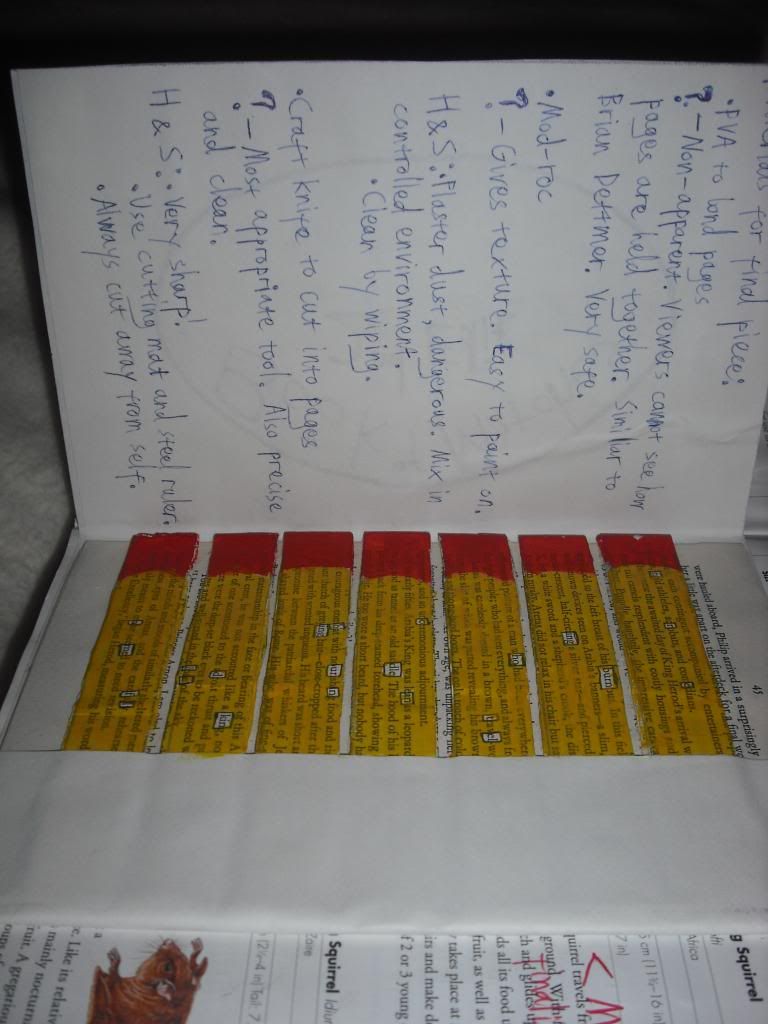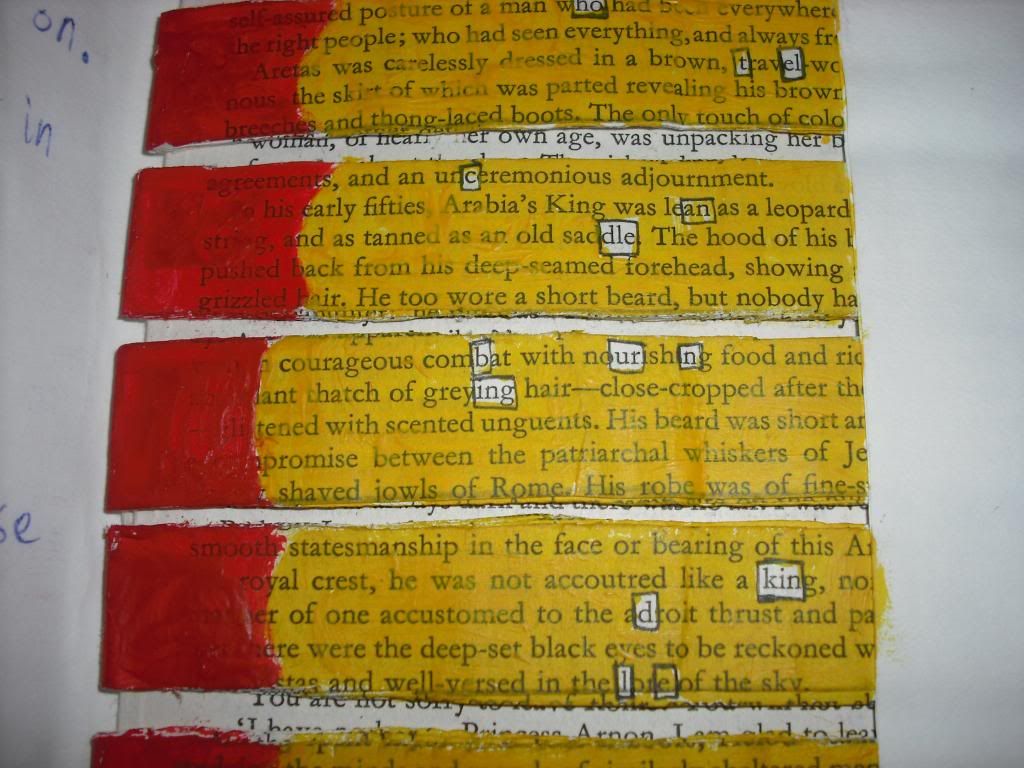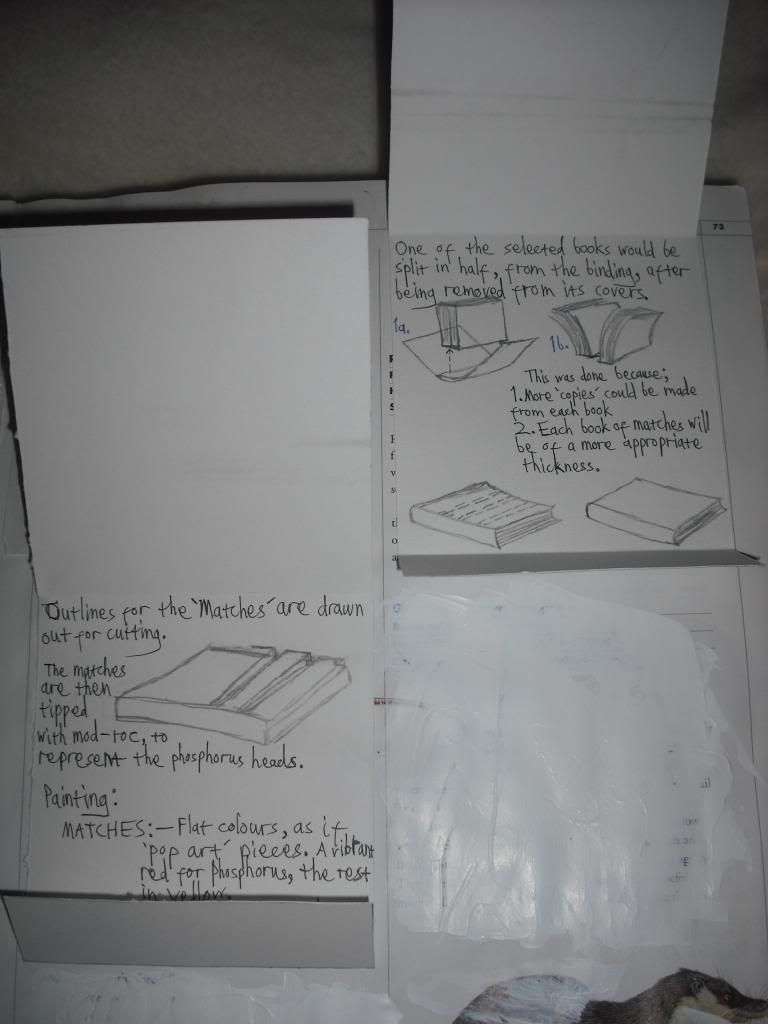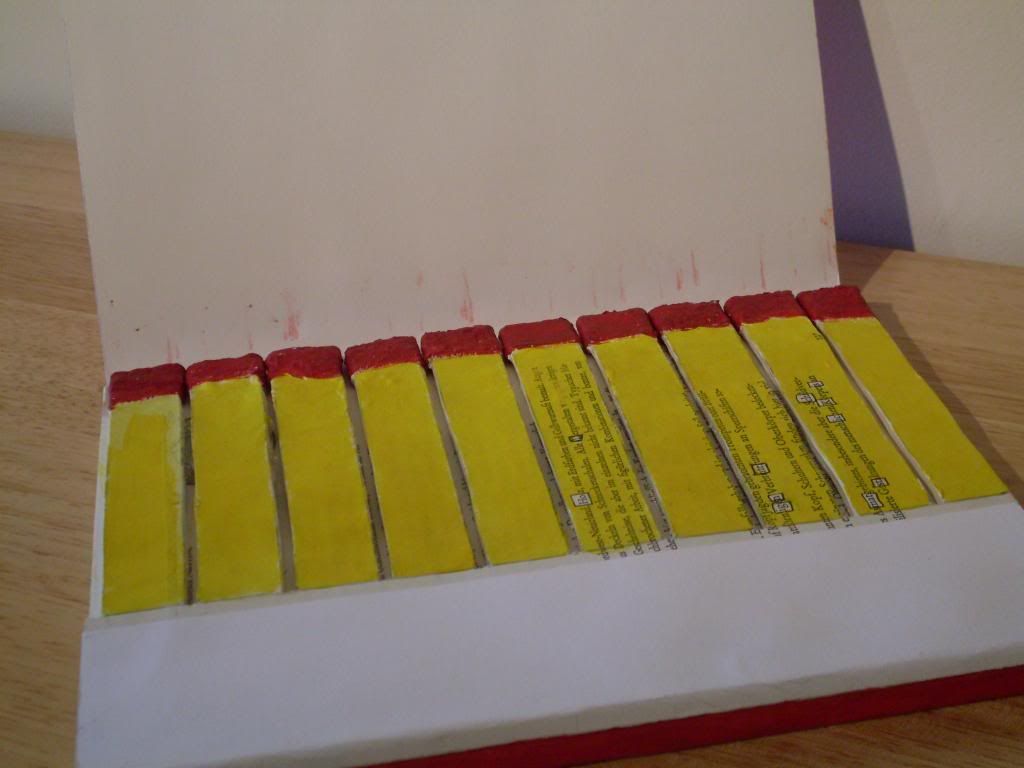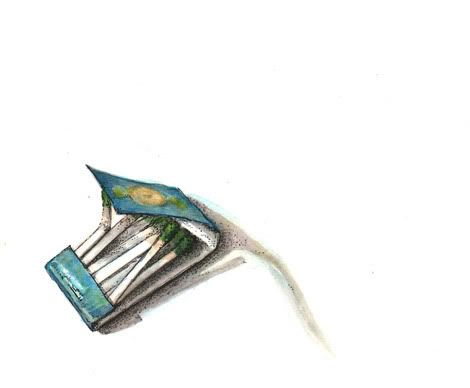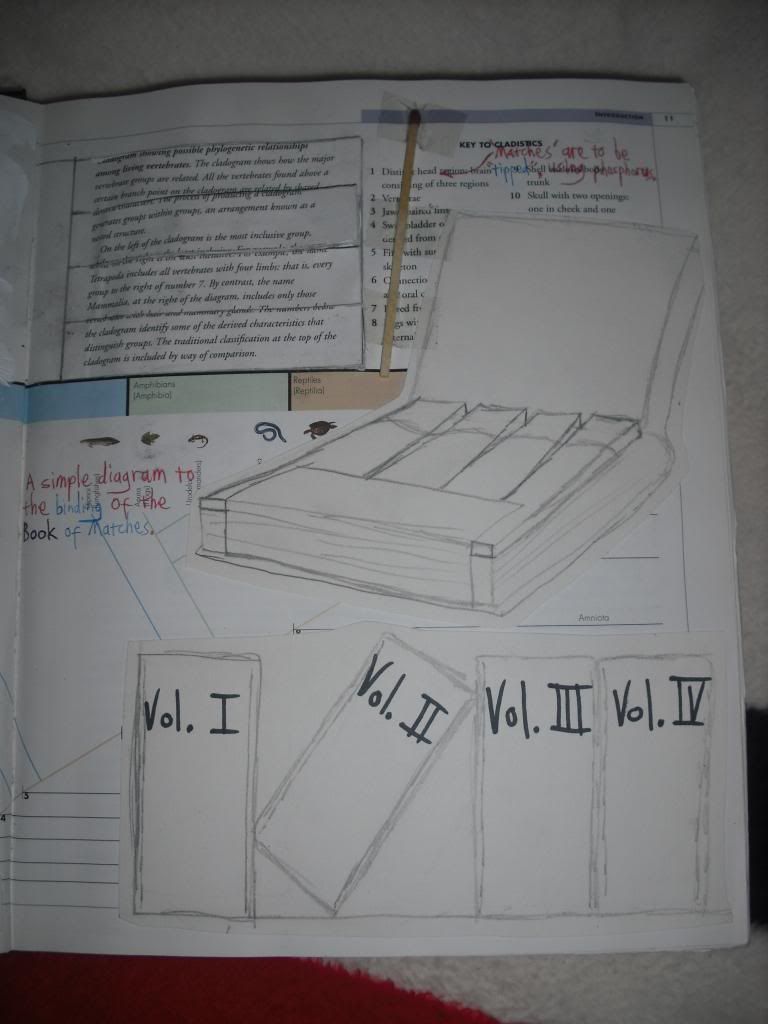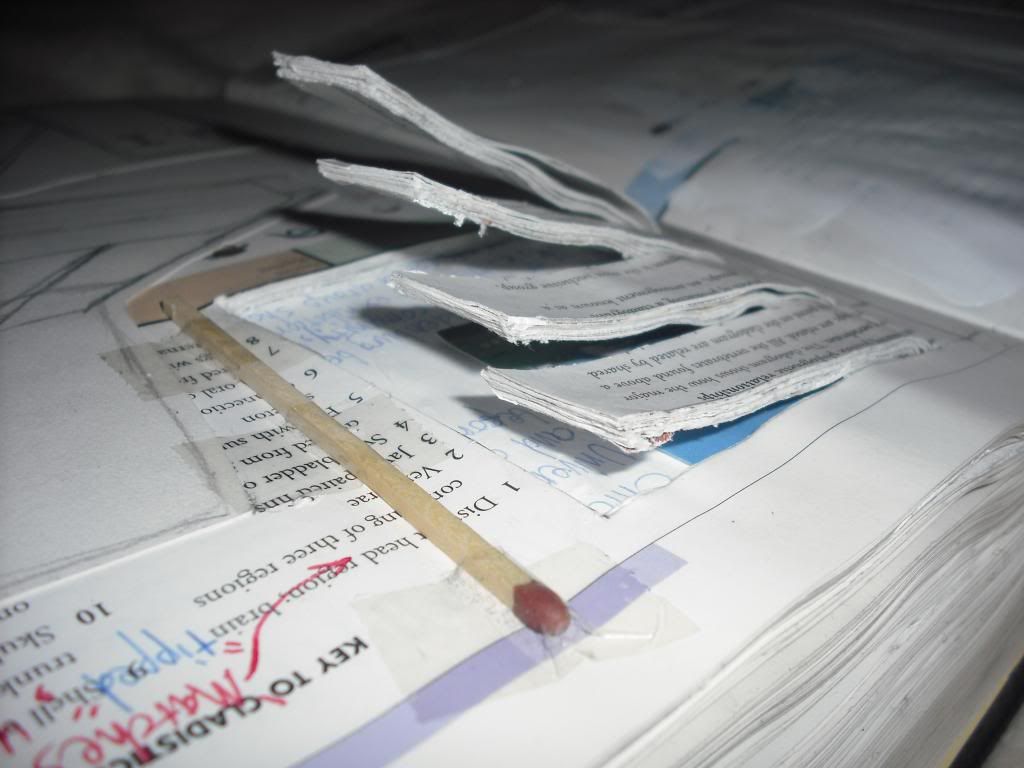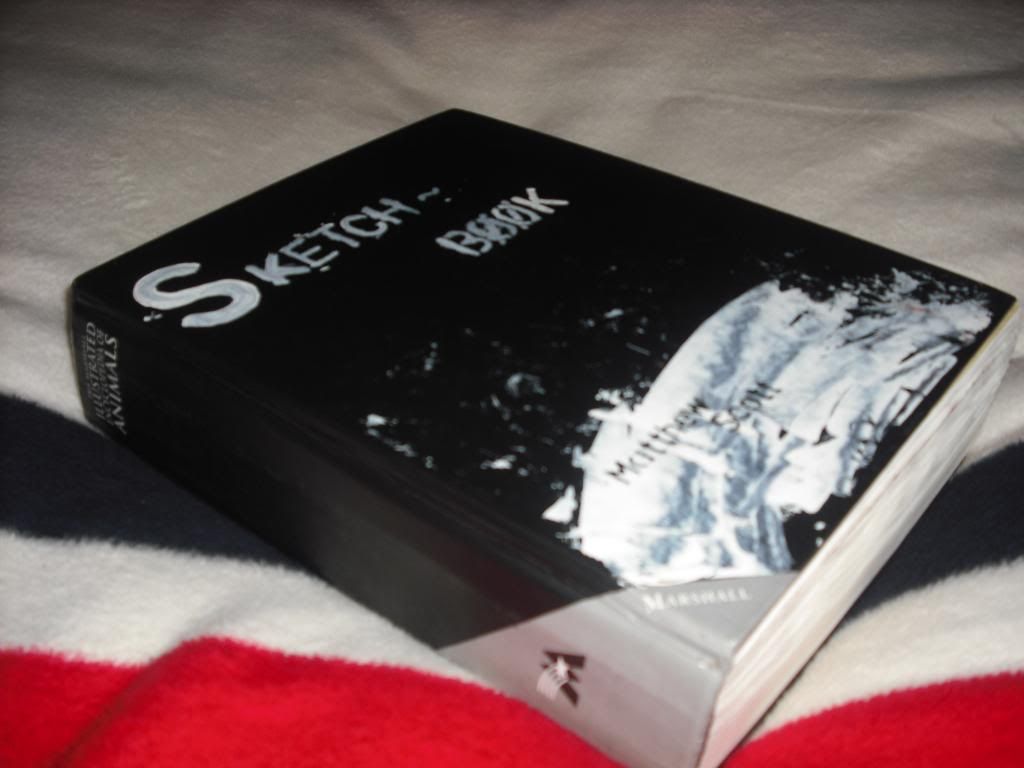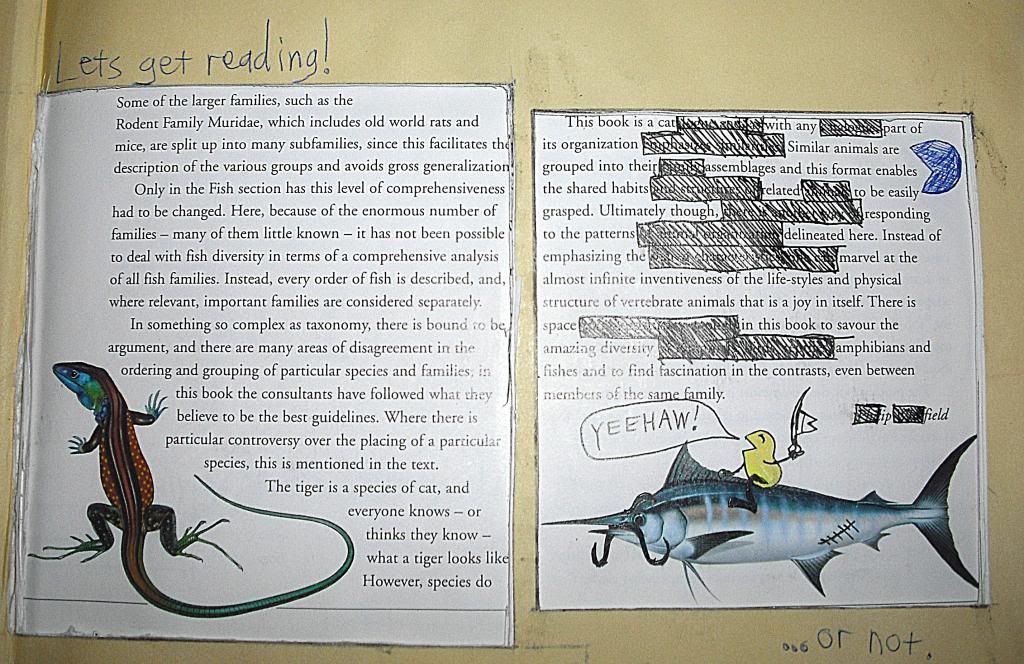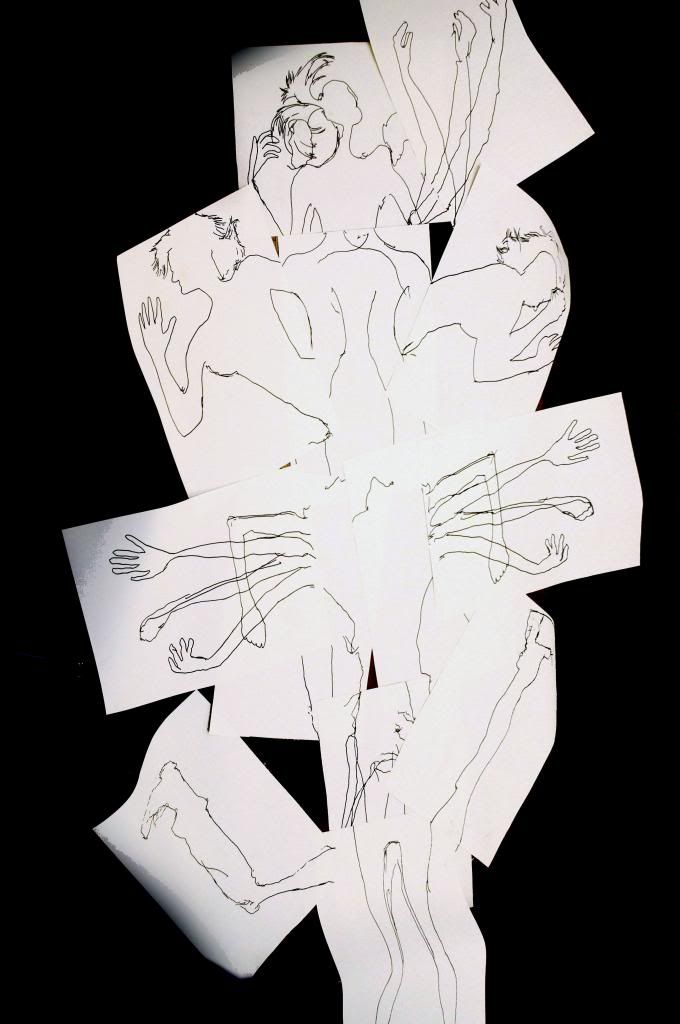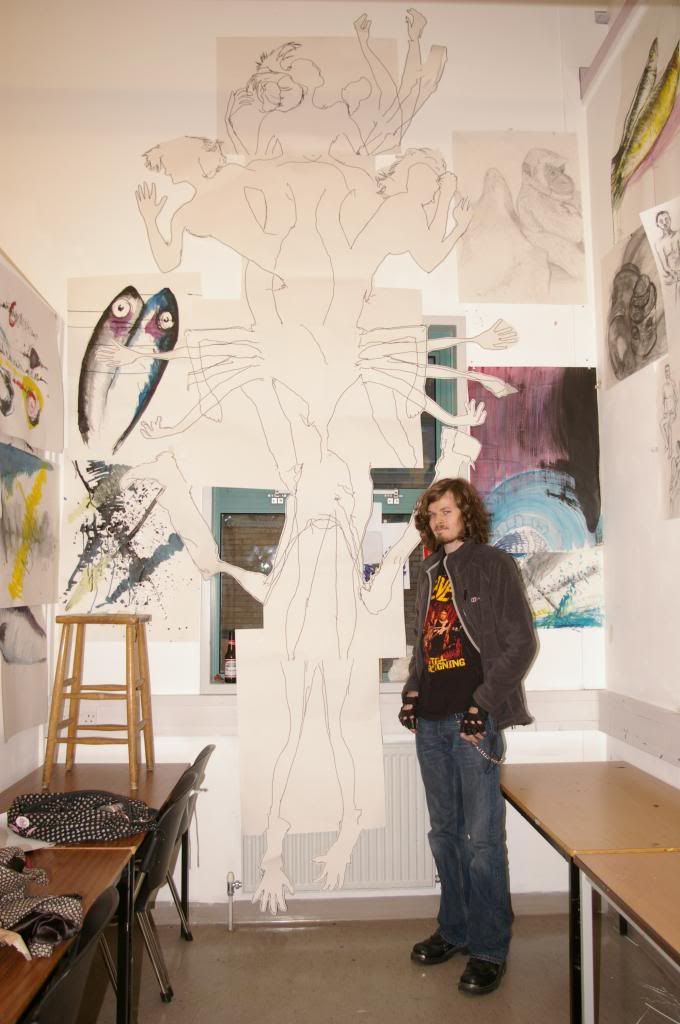In terms of the book's construction, I set to use the pages primarily as a canvas of sorts to whatever visions I incorporate into the book. Binding feels fairly straight forward, I intend to remove the pages from their original covers entirely and give it new binding and cover that feel more appropriate to the theme consistent to the whole book.
I have considered using a leather cover, or at least a material much like leather. As for the actual binding, I thought of having the pages held together by metal bolts. Since I didn't want to directly bore holes into the original pages themselves, I sought a material to stick onto the page edges, which would have the holes for bolts to go through when arranging it all for a cover.
The black strap on the page was the chosen material
Regarding the actual content I was introducing to the book, I chose to purely focus on images relating to Hell and Purgatory, while occasionally blending the theme with a visually humorous element. For this effect, I looked a little into Insult to Injury by Jake and Dinos Chapman (generally referred to as the Chapman Brothers). Additionally, I decided I needed to refine my visual interpretation of Hell, to present a slightly more narrative style rather than arbitrarily address the mere concept of Hell itself. As an immediate reference, I looked into the Divine Comedy by Dante Alighieri, more specifically the first book, Inferno. To an extent, I would set out to recreate scenes as described by Dante and his ficticious journey into and through Hell, often using the woodcut prints by Gustave Dore and watercolours by William Blake as additonal inspiration.
